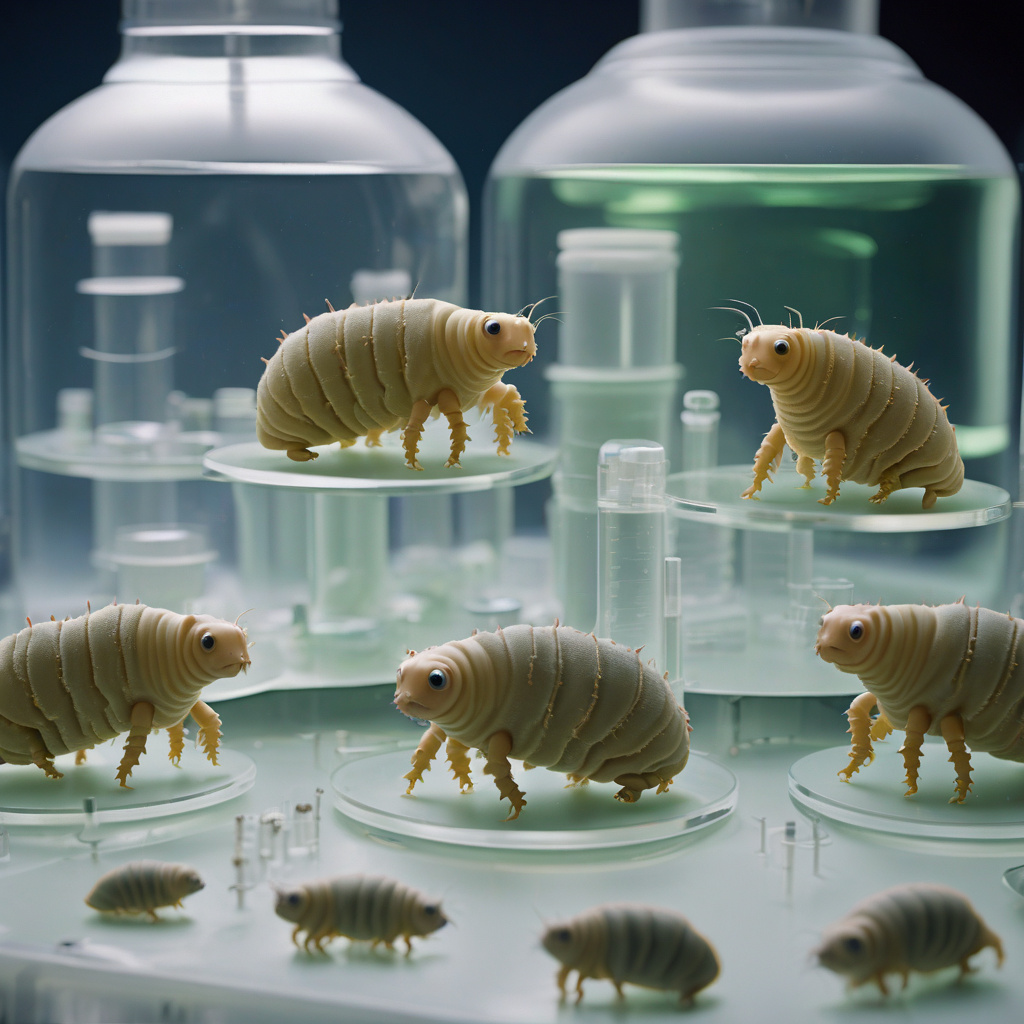The Resilience of Tardigrades: Scientists Freeze, Tattoo, and Revive in Breakthrough Bio Experiment
Tardigrades, a microscopic marvel, are known for their incredible resilience. These creatures are now getting a whole new level of attention as scientists push the boundaries of biological experimentation. In a groundbreaking study, researchers have managed to freeze-dry tardigrades, tattoo them with fluorescent dye, and successfully revive them. This unprecedented experiment opens up a world of possibilities for not only understanding the capabilities of these fascinating creatures but also for advancing scientific knowledge in various fields.
Tardigrades, also known as water bears or moss piglets, are incredibly tough microorganisms that can withstand extreme conditions that would be fatal to most other life forms. They have been found in some of the harshest environments on Earth, from the deep sea to the highest mountain peaks, and even outer space. Their ability to survive desiccation, extreme temperatures, pressure, and radiation has captured the interest of scientists for decades.
In this latest experiment, researchers took tardigrades and subjected them to a series of unconventional procedures. First, the tardigrades were carefully freeze-dried, a process that involves removing all the water from their bodies to put them into a state of suspended animation. This alone is a remarkable feat, as most organisms cannot survive the loss of water. The tardigrades were then tattooed with a fluorescent dye, allowing the researchers to track and observe them more easily under the microscope.
After the tattooing process, the next step was to revive the tardigrades. Scientists slowly rehydrated the creatures, bringing them back from their frozen state. Astonishingly, many of the tardigrades were successfully revived and began moving around shortly after being reanimated. This demonstrates the incredible resilience and adaptability of these tiny creatures, as well as the ingenuity of the researchers who conducted the experiment.
The implications of this study are far-reaching. By understanding how tardigrades are able to survive such extreme conditions, scientists may be able to apply this knowledge to various fields, from biotechnology to space exploration. Tardigrades could potentially hold the key to developing new techniques for preserving biological material, improving cryopreservation methods, or even protecting astronauts from the rigors of space travel.
Furthermore, the ability to tattoo and track tardigrades opens up new possibilities for studying their behavior and biology in more detail. By using fluorescent markers, researchers can now observe how tardigrades respond to different stimuli, interact with their environment, and even study their reproductive patterns. This level of insight into tardigrade biology could lead to new discoveries and advancements in the field of microbiology.
Overall, this breakthrough bio experiment highlights the resilience and adaptability of tardigrades, as well as the innovative spirit of scientific research. By pushing the boundaries of what is possible, scientists have unlocked new opportunities for understanding these remarkable microorganisms and harnessing their unique abilities for the benefit of humanity.
tardigrades, resilience, bio experiment, scientific breakthrough, microscopic marvel











